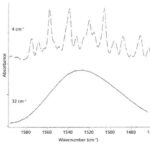When discussing ounces, it’s crucial to distinguish between a standard ounce and a troy ounce. This distinction is particularly important when dealing with precious metals like gold, silver, and platinum. So, how does a troy ounce compare to a regular ounce? Let’s delve into the key differences.
:max_bytes(150000):strip_icc()/GettyImages-183515120-5c640f9c46e0fb00016730e4.jpg)
Troy Ounce vs. Standard Ounce: A Weighty Difference
The primary difference lies in their weight. A troy ounce, used primarily for precious metals, weighs 31.1034768 grams. In contrast, a standard ounce (also known as an avoirdupois ounce) weighs 28.3495231 grams. This means a troy ounce is about 10% heavier than a standard ounce. While this difference might seem small, it becomes significant when dealing with large quantities of precious metals, impacting pricing and overall value.
Why the Different Ounces? A Historical Perspective
The troy ounce’s origins trace back to the medieval French city of Troyes, a prominent trading hub. Merchants there established a standardized weight system for precious metals, using grains of barley as a reference point. This system eventually evolved into the troy ounce we use today. The standard ounce, on the other hand, emerged as a general weight measure for various commodities.
Where Do We Use Each Ounce Today?
The troy ounce remains the standard unit of measurement in the precious metals market. You’ll see it used for pricing gold, silver, platinum, and sometimes even gemstones. The standard ounce is used for weighing most other goods, especially in everyday contexts like food packaging.
Understanding Troy Ounce Conversions
To clarify the weight difference, here’s a helpful conversion table:
| Troy Ounce | Standard Ounce | Grams |
|---|---|---|
| 1 Troy Ounce | 1.097 | 31.103 |
Investing in Precious Metals: Why Troy Ounces Matter
For investors in precious metals, understanding the troy ounce is crucial. Prices are quoted in troy ounces, so knowing the conversion can help you accurately calculate the value of your investment. For instance, if gold is priced at $1,800 per ounce, that refers to a troy ounce, not a standard ounce.
:max_bytes(150000):strip_icc()/different_gold_coins-4f51a2e1e47f43d193c3163a605c7066.jpg)
The Bottom Line: Know Your Ounces
The key takeaway is that a troy ounce is heavier than a standard ounce. This difference is fundamental for anyone involved in buying, selling, or investing in precious metals. Knowing the distinction ensures accurate calculations and informed investment decisions. Always confirm which ounce is being referenced to avoid confusion and potential financial discrepancies.
